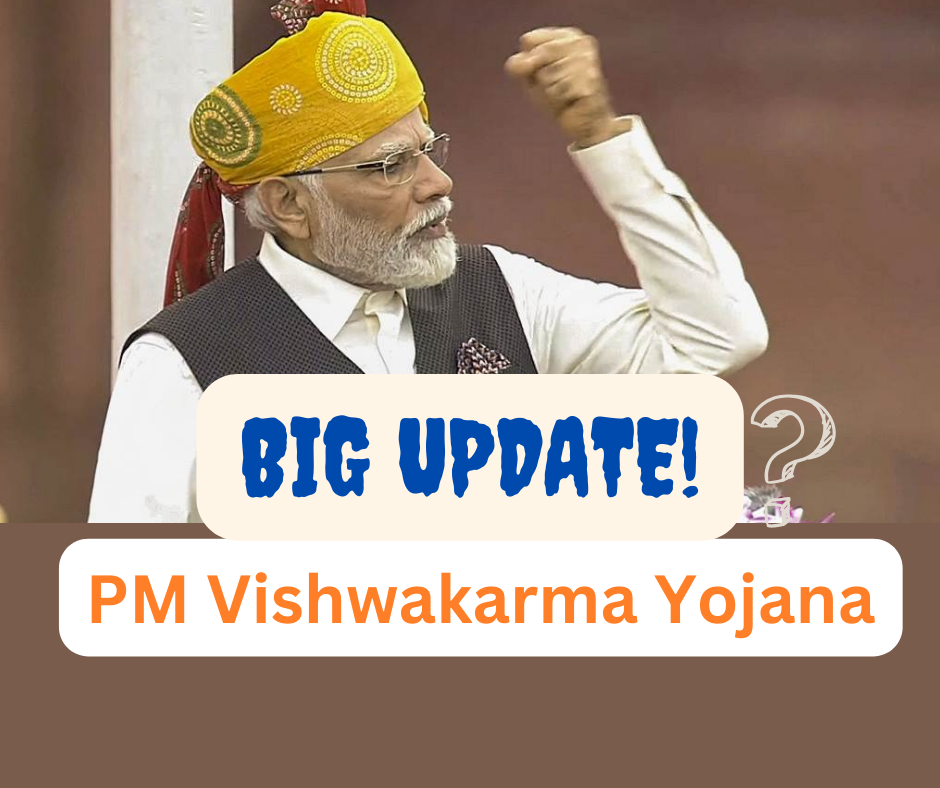
Table of Contents
Introduction
The Payments Infrastructure Development Fund (PIDF) scheme has now been expanded to include PM Vishwakarma scheme beneficiaries; the Governor of the Reserve Bank of India Shaktikanta Das announced on Friday.
Prime Minister Narendra Modi unveiled the PM Vishwakarma Yojana on September 17, 2023, which is a Central Sector Scheme designed to provide comprehensive assistance to skilled artisans and craftsmen who rely on their manual expertise and hand tools. This programme encompasses artisans and craftspeople engaged in 18 distinct trades, which include Carpenter (Suthar/Badhai), Boat Maker, Armourer, Blacksmith (Lohar), Hammer and Tool Kit Maker, Locksmith, Goldsmith (Sonar), Potter (Kumhaar), Sculptor (Moortikar, stone carver), Stone breaker, Cobbler (Charmkar)/Shoesmith/Footwear artisan, Mason (Rajmistri), Basket/Mat/Broom Maker/Coir Weaver, Doll & Toy Maker (Traditional), Barber (Naai), Garland Maker (Malakaar), Washerman (Dhobi), Tailor (Darzi), and Fishing Net Maker.
You can read in detail about PM Vishwakarma Yojana, Beneficiaries, Eligibility and How to apply in our previous article on the link below;
PM Vishwakarma Yojana: Complete Details, Benefits, Eligibility, How to Apply?
Brief about Payment Infrastructure Development Fund (PIDF)
The Payment Infrastructure Development Fund, often referred to as PIDF, is an initiative created by the Reserve Bank of India (RBI) in collaboration with major authorized card networks. Its primary purpose is to foster the growth of payment acceptance infrastructure in smaller cities, ranging from tier-3 to tier-6, as well as the northeastern states of India. This fund has recently undergone an expansion, which includes beneficiaries of the PM Vishwakarma scheme, as announced by RBI Governor Shaktikanta Das.
Understanding the PM Vishwakarma Yojana
The PM Vishwakarma scheme, launched by Prime Minister Narendra Modi in September 2023, is designed to provide comprehensive support to skilled artisans and craftsmen who rely on their manual skills and hand tools. It encompasses 18 distinct trades, including carpenters, goldsmiths, blacksmiths, masons, stone sculptors, barbers, and boat makers.
Beneficiaries of this scheme can access collateral-free loans of up to ₹3 lakh at an attractive interest rate of 5%. Initially, they receive ₹1 lakh, and after 18 months of repayment, they become eligible for an additional ₹2 lakh. The scheme goes beyond financial support, offering skill training, modern digital techniques, access to markets, and social security.
To know more about PM Vishwakarma Yojana, you can also read PIB article on the link: PIB-PM Vishwakarma Yojana
Expanding the PIDF Scheme
Governor Shaktikant Das announced an extension of the PIDF Scheme for an additional two years, now running until December 31, 2025. Initially launched in January 2021, this scheme aims to encourage the deployment of payment acceptance infrastructure like physical Point of Sale (PoS) systems and Quick Response (QR) codes in smaller cities, northeastern states, and Union Territories of Jammu & Kashmir and Ladakh. Originally, the PIDF scheme was set to run for three years until December 2023.
Earlier, in August 2021, beneficiaries of the PM SVANidhi Scheme in tier-1 and 2 cities were included in the PIDF scheme. This expansion is expected to boost digital transactions at the grassroots level.
PIDF’s Core Mission
The PIDF’s core mission is to promote economic growth by helping merchants who have not yet adopted payment acceptance technology, especially those lacking payment devices. Through this program, eligible merchants may receive both physical and digital acceptance devices. The Acquiring Committee (AC) will establish a transparent method for assigning targets to acquiring banks and non-bank entities across various market segments and geographic locations.
The scheme will particularly target essential service providers such as transportation, hospitality, government payments, fuel pumps, PDS shops, healthcare providers, kirana shops, and street vendors in the designated areas.
Initial Funding
To kickstart the nationwide terminalization efforts and ensure sufficient coverage during the first year, an initial corpus for the PIDF is vital. Both banks and card networks will be mandated to contribute to this fund. The RBI will contribute ₹250 crore to the corpus, while authorized card networks will collectively contribute ₹100 crore.
Conclusion
In summary, the PIDF is a crucial initiative aimed at expanding payment acceptance infrastructure in smaller cities and states in India. Its recent expansion to include PM Vishwakarma scheme beneficiaries and the extension of its tenure underscores its commitment to promoting digital transactions and economic growth at the grassroots level.
You can also read
- Disease X: 20 Times Deadlier Than Covid-19?
- Bihar Caste Survey : Report, Data Analysis, Background, Pros & Cons
- Vande Bharat Express : Route List, Time-Table, Ticket booking, Facilities, Fare, Speed
- Before going into General elections of 2024, you should know following things about History of Indian Elections

7 thoughts on “Big Update on PM Vishwakarma Yojana”